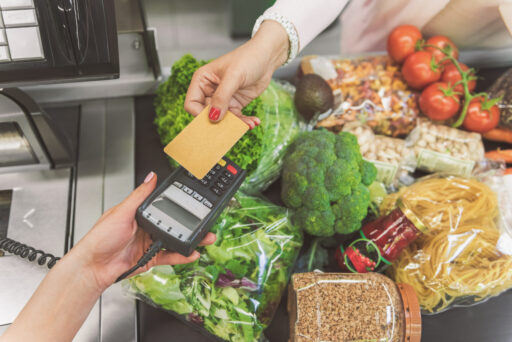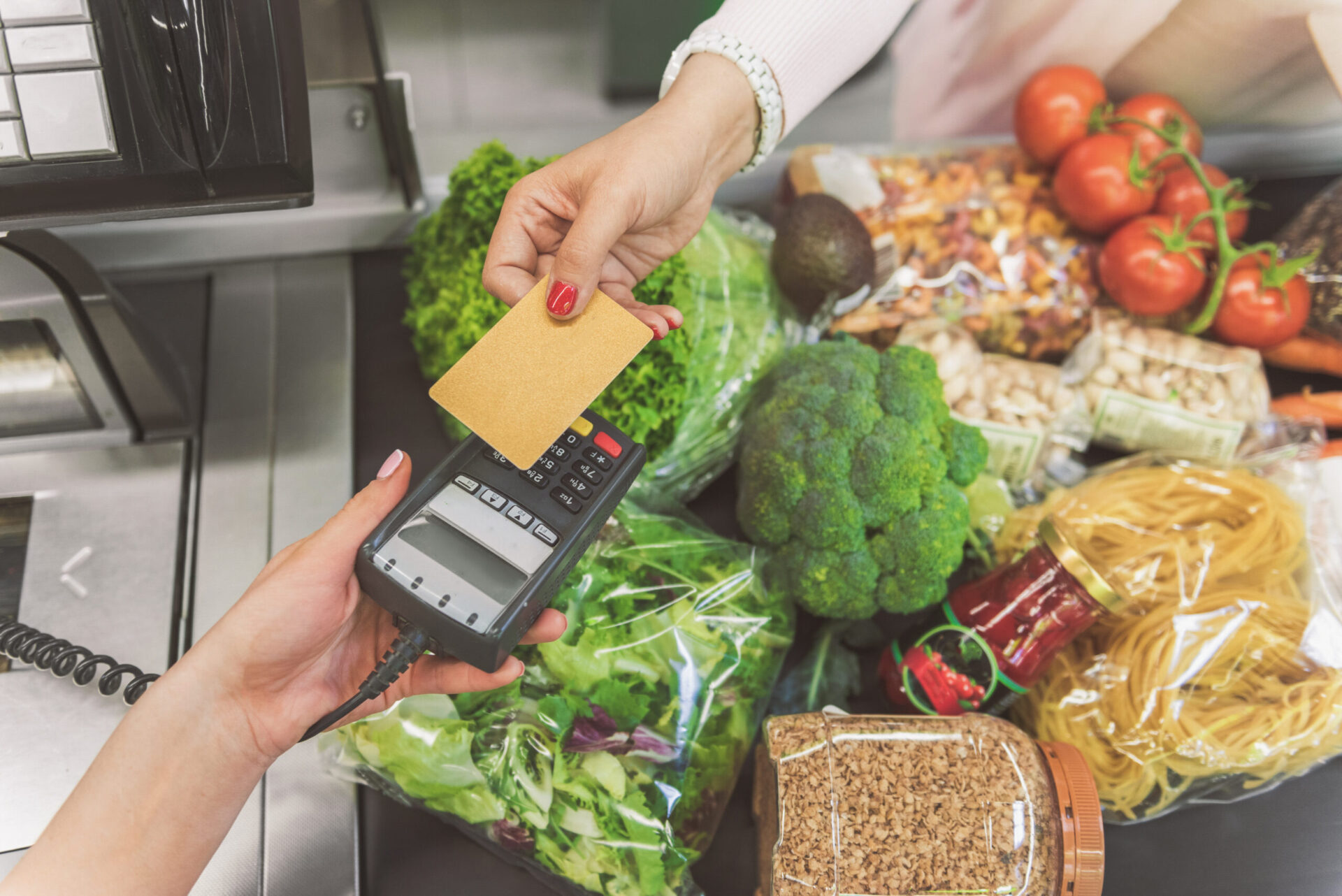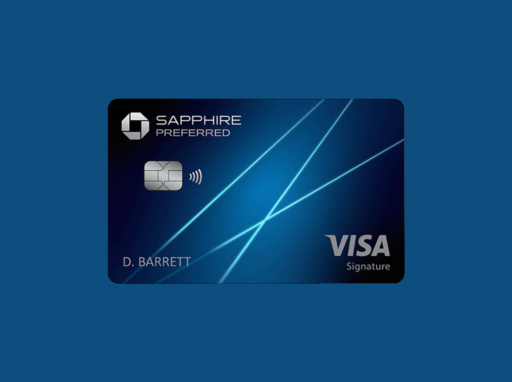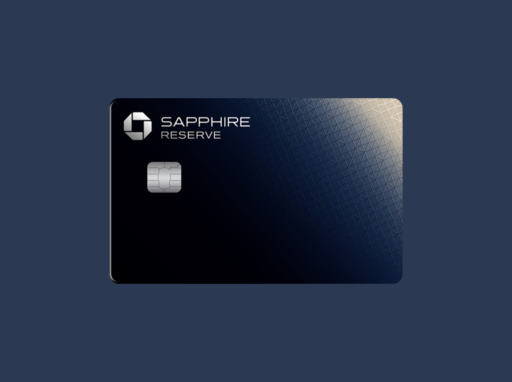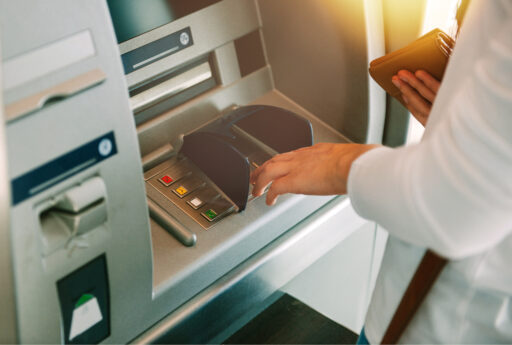If your grocery bill feels higher than ever, you’re not imagining things. Food prices are still up in 2025, and for most of us, grocery shopping is one of the biggest monthly expenses.
The good news? You can start earning money back just by using the right credit card at checkout. Whether you’re stocking the fridge for a family or shopping solo, a solid grocery rewards card can help you save on the things you already buy every week.
So, which one gives you the best bang for your buck? Let’s take a look.
Table of Contents
The #1 Best Credit Card for Groceries: Blue Cash Preferred® Card from American Express
Why it’s our top pick: The Blue Cash Preferred® earns a whopping 6% cash back at U.S. supermarkets, the highest rate you’ll find on any mainstream card. It’s ideal for families or anyone who spends a lot on groceries each month.
Quick facts:
- Cash Back: 6% at U.S. supermarkets (on up to $6,000 per year), then 1%
- Other perks: 6% on select streaming, 3% on transit, and gas
- Annual Fee: $95
- Welcome Bonus: $250 statement credit after $3,000 in purchases within the first 6 months
- Grocery Cap: $6,000 per year (about $500/month)
Who it’s best for:
This card is perfect for households with a steady grocery routine who want high, reliable rewards at traditional U.S. grocery stores (like Kroger, Safeway, Publix, etc.). The value easily offsets the annual fee for anyone spending more than $250/month on groceries.
5 Other Great Grocery Credit Cards to Consider
Not everyone shops the same, and not everyone wants to pay an annual fee. Here are five other top-rated grocery credit cards that could be a better fit depending on your habits and budget.
1. Citi Custom Cash® Card
Best for: Simplicity and no annual fee
This card automatically gives you 5% cash back in your highest spending category each month (up to $500). If groceries are your top expense, you’ll earn maximum rewards without having to think about it.
- Rewards: 5% on your top category (groceries included), 1% on everything else
- Annual Fee: $0
- Welcome Offer: $200 after spending $1,500 in the first 6 months
Why it’s a great choice: It’s automatic, flexible, and fee-free; ideal for those who want grocery rewards without the effort.
2. American Express® Gold Card
Best for: Food lovers and travelers
This card offers 4X Membership Rewards points at U.S. supermarkets (on up to $25,000/year) and 4X at restaurants, making it a powerful tool for foodies who also want flexible travel rewards.
- Annual Fee: $325
- Welcome Offer: Up to 100,000 points after spending $6,000 in 6 months
Heads up: The high fee is worth it only if you also travel or spend big in multiple food categories.
3. Capital One SavorOne Cash Rewards Credit Card
Best for: Well-rounded everyday spending
With 3% cash back on groceries, dining, entertainment, and streaming, the SavorOne is a great all-around option, especially for people who don’t want to pay an annual fee.
- Annual Fee: $0
- Welcome Offer: $200 after spending $500 in the first 3 months
Good to know: Walmart and Target grocery purchases don’t qualify for the 3% grocery rate.
4. Chase Freedom Flex®
Best for: Bonus hunters and quarterly strategists
This card earns 5% cash back on rotating categories, which often include grocery stores for one quarter each year. It also offers solid everyday rates on dining and drugstores.
- Annual Fee: $0
- Welcome Offer: $200 after spending $500 in the first 3 months
- Other rewards: 3% on dining and drugstores year-round
Best for: People who don’t mind tracking categories and maximizing quarterly bonuses.
5. Instacart Mastercard®
Best for: Grocery delivery fans
If you do most of your grocery shopping online, this card offers 5% back on Instacart purchases and includes 2 free months of Instacart+, plus delivery perks.
- Annual Fee: $0
- Bonus: $100 Instacart credit after first purchase
- Extras: 5% on Chase Travel, 2% on restaurants, and gas
Why it stands out: Built for those who skip the checkout line entirely and prefer having groceries delivered to their door.
Which Grocery Card Is Right for You?
Here’s a quick breakdown based on how you shop:
Final Thoughts: Earn Cash Back On Your Grocery Runs
Groceries are something we ALL have to buy (whether we like it or not), so why not earn some perks while you’re at it?
Whether earning some cash back sounds nice to you or if you want to start racking up points for your next trip, there’s a grocery credit card out there that fits how you spend your money. The most important thing is to find one that matches your habits, not someone else’s.
Just remember:
- Try to pay off your balance each month so rewards don’t get eaten up by interest
- Keep an eye on any spending caps or bonus category limits
- And most importantly, choose a card that actually makes your everyday life easier (and maybe even a little more rewarding)
A better grocery credit card won’t make your fridge magically stock itself, but it can make filling it a little more worthwhile.
🚀 Explore, Learn & Grow with Wallet Monkey!
Unlock the latest tips, tricks, and expert insights on money management, credit, and more. Subscribe now and stay ahead of the curve in personal finance!
Subscribe NowFAQs About the Best Credit Card for Groceries
1. Which credit card is best for grocery shopping?
The Blue Cash Preferred® Card from American Express is widely considered the best credit card for grocery shopping, thanks to its 6% cash back at U.S. supermarkets (on up to $6,000 per year). It’s perfect for families or anyone who spends heavily on groceries. That said, other great options like the Citi Custom Cash℠ or Capital One SavorOne may be better fits depending on your spending habits and whether you prefer a no-annual-fee card.
2. Should you use a credit card for groceries?
Yes, if you can pay off the balance in full each month. Using a rewards credit card for groceries is one of the easiest ways to earn cash back or points on your everyday spending. Just avoid carrying a balance, since interest charges can cancel out the rewards you earn.
3. Does buying groceries with a credit card build credit?
It can, yes. Using a credit card responsibly, like paying on time and keeping your balance low, helps build your credit over time, no matter what you’re buying. Groceries are a great regular expense that can help show consistent, healthy card usage.
4. Do grocery rewards apply to online orders and delivery apps?
That depends on the card. If you’re ordering directly from a grocery store’s website or app, you’ll usually still get the grocery rewards rate. But if you use a third-party delivery service like Instacart, it may not count unless your card specifically includes it, like the Instacart Mastercard®.
5. What counts as a grocery store for credit card rewards?
Most cards count traditional supermarkets such as Kroger, Safeway, Trader Joe’s, and Whole Foods. But big-box stores like Walmart and Target, or warehouse clubs like Costco, often don’t qualify for grocery bonus rates. Be sure to read the fine print before assuming your favorite store will earn rewards.
6. What’s the best no-annual-fee credit card for groceries?
Two great options are the Citi Custom Cash®, which gives you 5% back on your top spending category each month (including groceries), and the Capital One SavorOne, which earns 3% on groceries, dining, and entertainment. Both are solid choices if you want rewards without paying an annual fee.
Top Relevant Articles
Best Capital One Travel Credit Card
Compare top Capital One travel cards and find the right one for your next adventure.
Capital One Venture X Review
Is Venture X worth the premium? Dive into the features, perks, and real-world value.
American Express Credit Card Guide
Explore every Amex card in one place—features, comparisons, and tips to maximize rewards.
